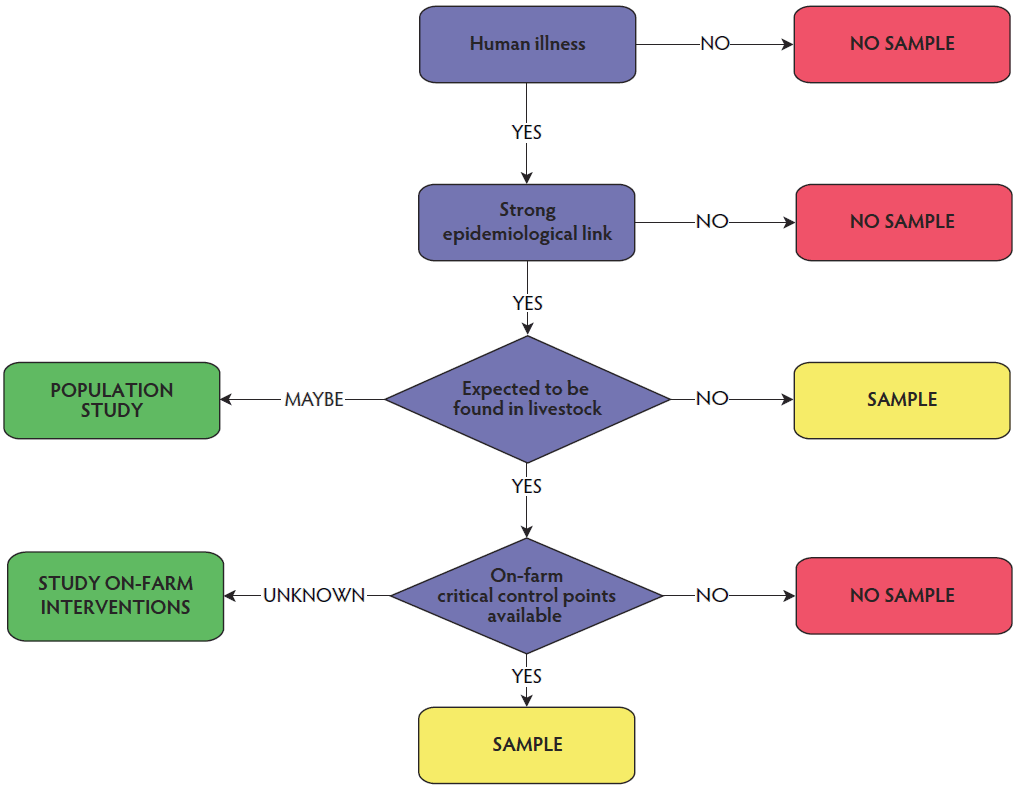Advocacy in action: (Jan 2019)
Imagine this scenario: a group of people show up at a local hospital exhibiting symptoms consistent with a foodborne illness. The doctors contact the local public health officials who conduct an epidemiological investigation. Laboratory analysis confirms the likely culprit is a Salmonella commonly found on livestock farms. The investigation implicates a pork product consumed at a local pig pickin’.
The carcass in question is traced back to a local processor who receives pigs from a number of farms in multiple states. The US Department of Agriculture (USDA) Food Safety Inspection Service (FSIS) is notified and the plant agrees to discontinue processing while an on-site inspection occurs. Salmonella contamination is identified by FSIS in multiple areas of the plant.
The Centers for Disease Control and Prevention (CDC) is contacted for assistance in conducting a thorough epidemiological investigation to determine the root cause of the outbreak. The subsequent investigation identifies 5 swine farms in multiple states likely to have provided animals to the plant during the time of the outbreak. Public health officials request access to the farms to conduct an on-farm investigation. This raises several questions and concerns:
- What government agency has the authority to collect samples on the farm?
- What is to be gained by conducting an on-farm investigation?
- What is the farmer’s liability?
- How will processors and consumers respond to a farmer being implicated in an outbreak investigation? Could this limit market access?
In September, I joined representatives from the National Pork Board and the National Pork Producers Council along with other barnyard groups and state animal health officials to discuss these questions and the potential implications of on-farm public health investigations. The USDA-FSIS and Veterinary Services coordinated the two-day meeting. During an outbreak investigation, both animal health officials and public health officials have statutory authority. In most cases, however, public health officials generally rely on state and federal animal health officials to conduct the on-farm investigation and sample collection. The question then becomes, “is an on-farm investigation warranted?”, which was the focus of our meeting. The objective was to begin developing a framework for deciding when on-farm or other pre-harvest investigations are warranted during foodborne outbreaks. The specific goals of the meeting were to:
- Determine if and when on-farm or other pre-harvest investigations of outbreaks of human illness associated with FSIS-regulated products or animal contact, including those associated with antimicrobial resistant pathogens in animals or animal products, are warranted; and,
- Develop procedures for such investigations.
Determining the necessity of an on-farm investigation should center around what’s to be learned by collecting samples on the farm and how relevant this information is to the outbreak investigation. For instance, if the pathogen in question is commonly isolated from a farm environment or if there are no additional mitigations that can be put in place at the farm level to address the pathogen in question, is there anything to be gained by conducting an on-farm investigation at a specific farm? Each of the species groups in attendance were asked to consider the circumstances associated with a foodborne illness investigation involving their commodity and outline an algorithm defining the appropriateness of an on-farm response. The discussion within the pork group focused on what was to be gained by such an investigation.
The scenario described above was real. In this case, state and federal public health officials aggressively sought access to the farms supplying hogs to the processing facility implicated in the outbreak even though: 1) the salmonella identified was likely to be found on most swine farms, and 2) the farms also supplied hogs to a number of other processors with no evidence of problems implying that the pathogen exposure was likely the result of contamination at the processor and a failure to properly cook the pork before serving resulting in the disease outbreak. State animal health officials in both states denied requests to conduct on-farm sampling. While it may be a rational decision to deny public health officials access to on-farm sampling, justifying such an action to a broad audience can be a challenge without some previously agreed-upon algorithm defining the criteria to support such a decision.
The pork break-out group, which included pork representatives and state and federal animal health officials, developed a decision matrix (Figure 1) to address the question of when an on-farm investigation is warranted and likely to yield useful information to facilitate future mitigations. The decision points considered included:
- Is there human illness involved?
- Is there a strong epidemiological link to a particular farm or farms?
- Is the pathogen likely to be found on most farms?
- Are there opportunities to implement additional effective mitigations at the farm level?
Figure 1: Decision matrix to determine if an on-farm investigation is warrented.

The responses to these decision points would either support the need for an on-farm investigation, studies into the broader animal population, or the need to investigate the feasibility of implementing on-farm critical control points or additional mitigations.
Although still in draft form, this matrix seems to be a reasonable guideline that could help direct the expectations of farmers as well as state and federal animal and public health officials. This model has been presented to the meeting organizers and will hopefully form the basis for on-going discussions between USDA and CDC. The hope is that this effort will result in the development of memorandums of understanding between the agencies and their state and federal partners describing how these outbreak investigations are to be conducted going forward. At the very least, these efforts help to increase the awareness of the differences in perception between animal and public health. As one animal health official noted during the meeting, “We need to help public health understand that pigs are not broccoli!”
Harry Snelson, DVM
Director of Communications